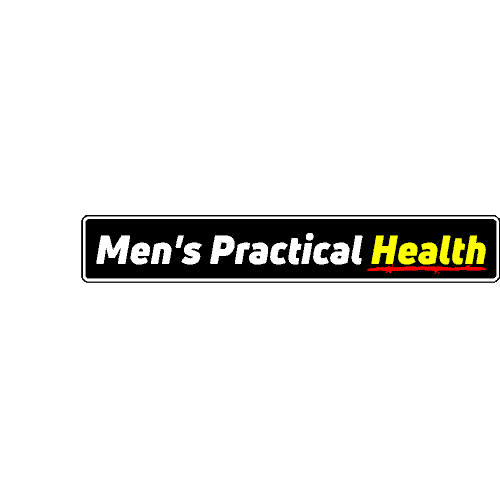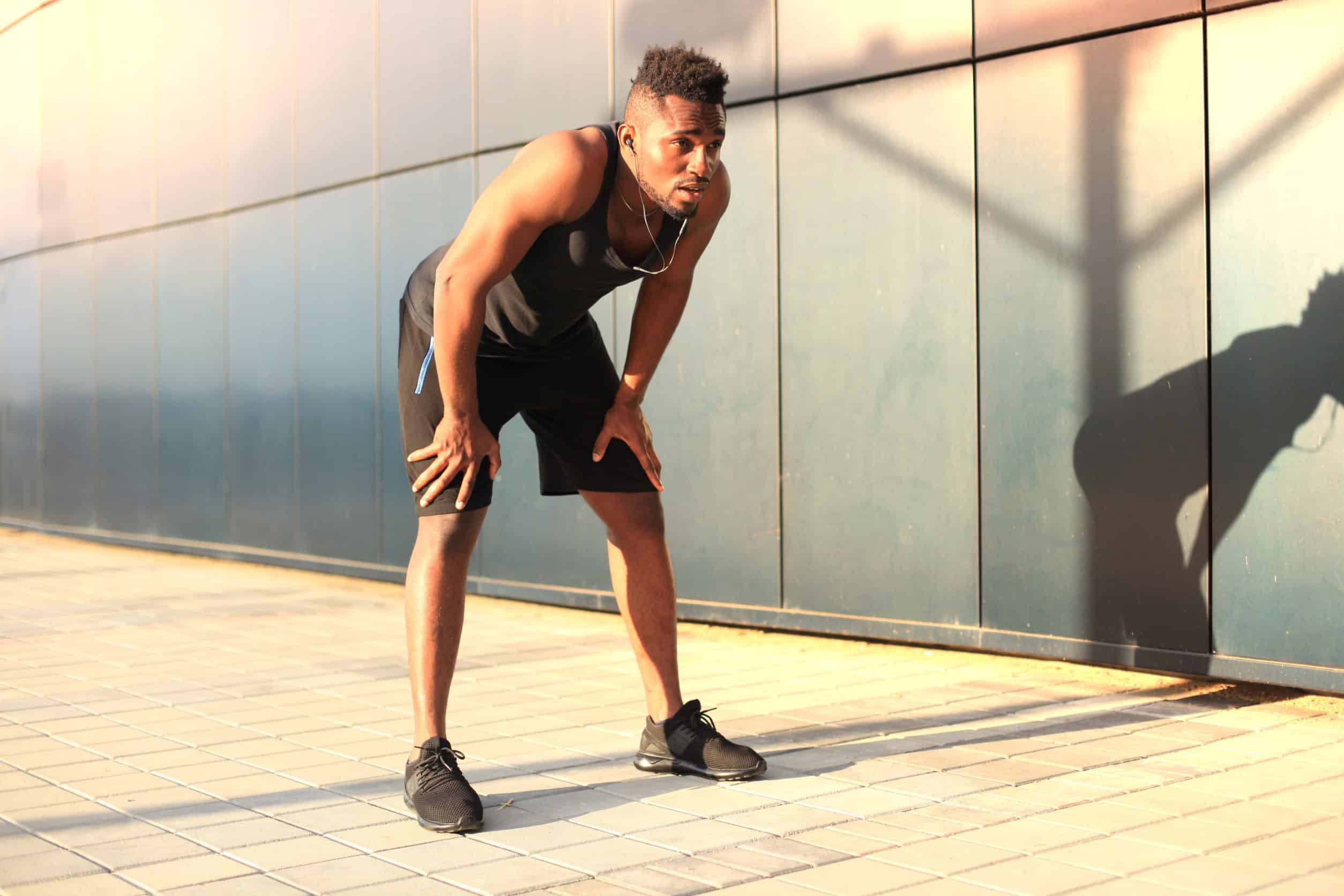Stepping into your 40s is like embarking on a new chapter. For many men, this stage starts with reflection and the realisation that health has often taken a backseat.
After all, focusing on career and family responsibilities takes up time.
But what if I told you that getting fit at 40 is entirely within reach and it’s not an impossible dream …
No matter how unfit you might have become.
In this blog post, we’ll explore how you can reach your fitness goals, whether to lose weight, become more muscular, or have more energy daily.
Is it Possible to Get Fit After 40?
Getting fit after 40 is highly rewarding and realistic. Age brings wisdom and maturity, which can translate into a more disciplined approach to a fitness routine.
Adapting your approach to suit your body’s changing needs is key. A balanced workout routine that combines resistance training and cardiovascular exercise will improve your health and well-being.
The body is highly resilient, even at 40. Many men find that with the right mindset and a focused plan, they can achieve a good fitness level.
The secret lies in understanding your starting point and setting realistic and achievable goals. Committing to regular physical activity will result in significant improvements in energy levels, mental health, and more.
Can You Change Your Physique After 40?

Yes, you can! While age might slow down some metabolic processes, it doesn’t eliminate the potential for body transformation.
Changing your body shape involves building muscle and reducing fat, an attainable goal through consistent exercise and nutrition strategies.
Weight training becomes crucial in maintaining and increasing muscle mass, which helps you stay strong.
In addition to exercise, nutrition plays a pivotal role. Consuming a diet with the right amount of protein, fats, and carbs ensures your body receives the nutrients it needs to fuel workouts and recover well.
Also, hydrating well and resting supports your body’s adaptive processes, allowing for changes in composition.
Consistency is vital. Regular workouts and dietary adjustments create a road for body transformation. Over time, you’ll notice improvements in muscle tone and overall physique …
Proving that age is just a number for reshaping your physique.
Is it Too Late to Get Ripped at 40?
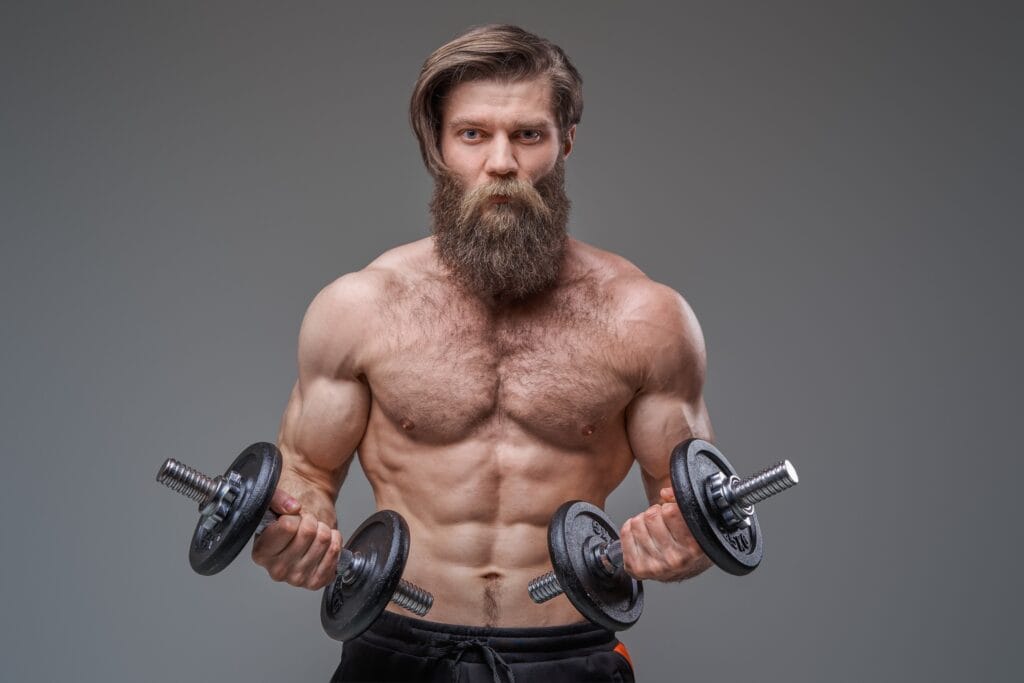
Achieving a ripped physique at 40 requires dedication, strategic planning, and patience. It involves balancing weight training to promote muscle growth and some moderate aerobic activity for overall cardio fitness.
The most important element when it comes to losing weight is a calorie deficit. When in a calorie deficit, ensure to consume an adequate amount of protein. This will help you develop and preserve muscle.
Weight training should focus on compound movements like squats, deadlifts, and bench presses, which engage many muscle groups and stimulate growth.
Using progressive overload (gradually increasing weight or repetitions) ensures continuous muscle adaptation and strength gains.
Proper nutrition is non-negotiable. A balanced diet that emphasises whole foods is key to a healthier diet. Foods such as lean proteins, vegetables and reduced junk food will help you build muscle. Also, protein helps to keep you satiated during a caloric deficit.
Remember, consistency is the mantra. With time and effort, getting ripped at 40 becomes a reality.
How Long Does It Take for a 40-Year-Old to Get in Shape?

The timeline for getting in shape varies based on individual factors, such as:
- Starting fitness level
- Dedication
- Lifestyle
Generally, noticeable improvements can be seen within 8 to 12 weeks of consistent effort …
And your diet is good!
This time frame allows your body to adapt to increased physical activity and dietary changes, leading to better fitness and a change in body composition.
For long-lasting results, it is important to view fitness as a lifelong commitment, not a quick fix. Progress may initially seem slow, but small, consistent efforts will provide substantial benefits over time.
Setting short-term goals within this period helps maintain motivation and provides targets that can be celebrated.
It’s a good idea to listen to your body and adjust your routine when needed. Recovery is an essential part of the fitness process, especially at 40.
Ensuring adequate rest and recovery between workouts prevents burnout and injuries. Remember, you’re not 21 anymore and might need 1-2 days off between sessions. This will enable steady and sustainable progress.
Is 40 Too Old to Get Abs?
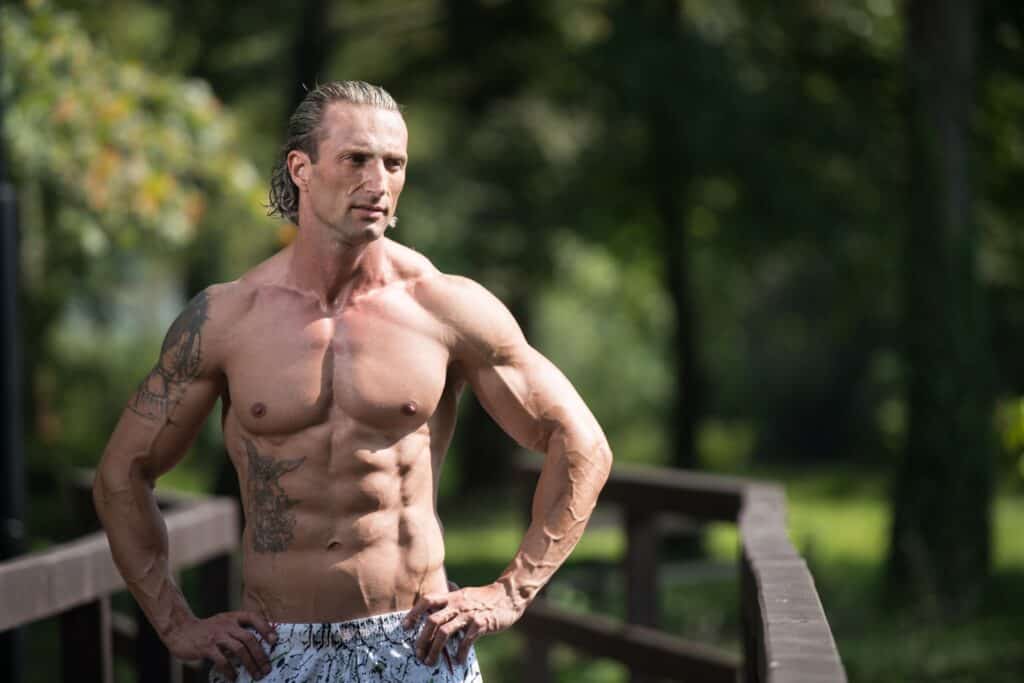
Definitely not! Achieving visible abs at 40 is possible with the right combination of diet, exercise, and perseverance. The aim should be to reduce body fat while building the abdominal muscles through targeted exercises like leg raises and incline sit-ups.
Everyone has abs, but for the majority, they’re not visible because of the layer of fat on top of the rectus abdominus.
So, if you’re determined to have a flat stomach and show your abdominal muscles, a calorie-controlled diet is essential to shed excess fat.
Why Being Fit at 40 is Important
No matter how old you are, getting into good shape is never too late. And there are a host of reasons, even in your 40’s, that you will benefit from getting fit, such as:
- Reduce the risk of heart disease
- Enhance mental wellness
- Decrease the risk of diabetes
- Promote cardiovascular health
- Better sleep quality
- Boosts energy levels
- Reduce stress levels
Physical activity is a natural antidepressant, reducing anxiety and promoting mental clarity.
So, a fit lifestyle fosters positive health outcomes and resilience against life’s challenges. It makes daily activities easier and more enjoyable while also enabling you to maintain independence and an active lifestyle well into your later years.
How to Get Fit at 40
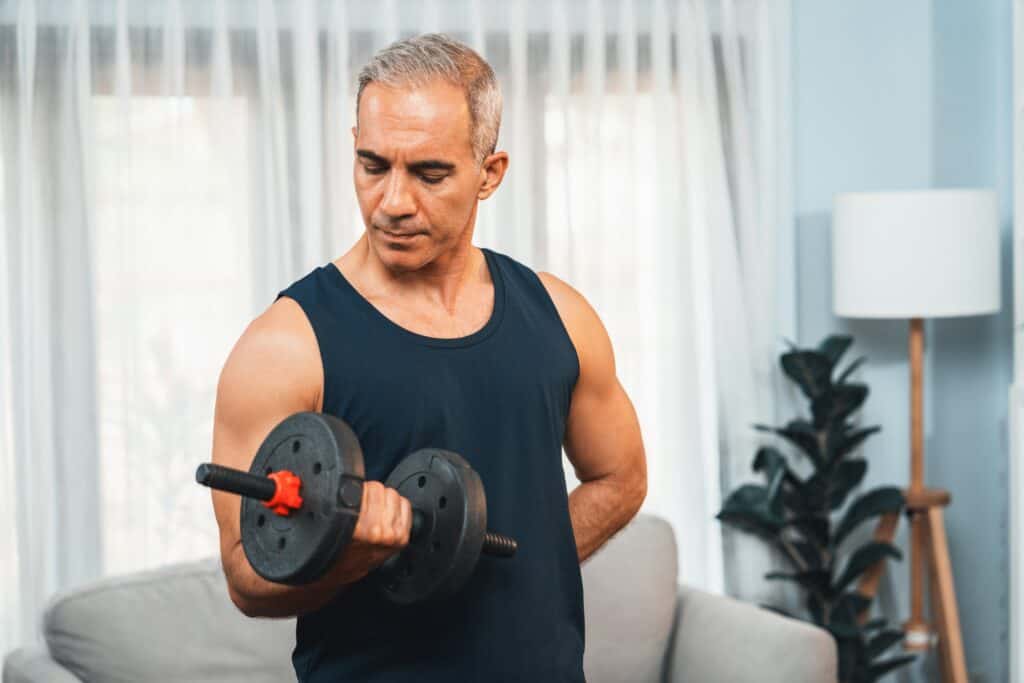
Following these principles will guide you to successfully reach your goal.
- Setting realistic targets
- Be consistent
- Understand your “why.”
- Plan your workouts
- Be active daily
- Include resistance training
Setting Realistic Targets
It is vital to have realistic goals that you can aim for. For most people, there’s no point thinking that you’re going to turn into prime Sylvester Stallone in Rocky after one year. This will diminish your chances of sticking it out and getting into shape.
However, setting achievable goals along the way will keep you on track and help with motivation to reach your health goals.
It’s important to realise that the fitness journey requires patience. In fact, maintaining your fitness becomes a lifetime journey and will include setbacks. But by not quitting after one of those setbacks and simply getting back onto your exercise routine …
Those setbacks will merely become minor blips along the way.
So, focus on small progressions and create a sustainable path to success.
Being Patient and Consistent with Your Exercise Program
Patience is vital to lasting fitness success. Results may take time, but consistent effort yields meaningful change.
If becoming fit again was quick and easy, everyone would do it. But in reality, only some have the discipline and patience to see it through.
So, commit to regular exercise and daily healthy habits. Have confidence that the process will work in your pursuit of your fitness goals.
Understanding Your “Why” for Getting Fit
Whether it’s improving health, boosting confidence, or looking jacked, recognising your “why” helps to keep you focused and committed to your fitness path.
It can also help on days when you’re feeling unmotivated. We’ve all had those days when we would prefer to go home and rest. But remember, your “why” can help you go and get it done in those moments.
And trust me, you’ll feel better for it!
Planning Your Workouts is Essential for Men Over 40
Planning workouts is crucial for men over 40 to achieve and maintain fitness effectively.
I mean, let’s face it …
At this age, we are all going to have something restricting certain movements or suffer from an old injury.
So it’s important to have some sort of plan before you start and not just wing it day by day.
For example …
If you have a shoulder problem, you might need to adapt certain exercises to avoid putting your shoulder in a position that causes pain.
Now, I know you’ll hear many personal trainers state that you must write down your training plans. And I’m not disagreeing. This is a great way to track progress and not think about what you must do during training.
But …
I’m also a realist.
In reality, many people want to get fit but don’t have the time to record every workout. Let’s face it, writing down every workout is time-consuming.
This can be overcome by hiring a personal trainer who will record everything for you, as long as you have a plan and work out consistently (using the same core exercises). Then you will see improvements.
Now, I admit this is not the optimal way to train. Yet, optimal is not a priority for many working men with family commitments.
Simply getting into shape is the goal.
So, as you get used to the workout routine, you will know how much you lift and for how many reps for each exercise, although you might forget now and then. This is why it’s not optimal. But you will have an idea of how to progress the load, which will be enough to get fit.
Include Physical Activity into Your Daily Routine
Integrate movement into your daily life to help decrease a sedentary lifestyle. I’m sure you’ve heard the phrases “choose the stairs over elevators at work” or “walk instead of drive to the local shop.” These are great tips for seeking out opportunities to stay active throughout your day. They’re also great ways to increase your step count and burn more calories.
In your free time, going for a 30-minute walk each day is a fantastic way to burn a few more calories. It’s also a fantastic moderate aerobic activity to increase your cardio fitness.
One of the great things about walking is that it has a low injury risk compared with running. It’s also great as an active recovery exercise.
Include resistance training for fitness over 40
Resistance training promotes muscle growth, strength, and health. Maintaining and enhancing muscle mass fosters vitality, independence, and resilience against age-related decline.
Focus on compound exercises and use progressive overload to build muscle. By using compound movements, you can work all the major muscle groups.
Link to beginners’ workout
Use Free Weights or Machines in The Gym?
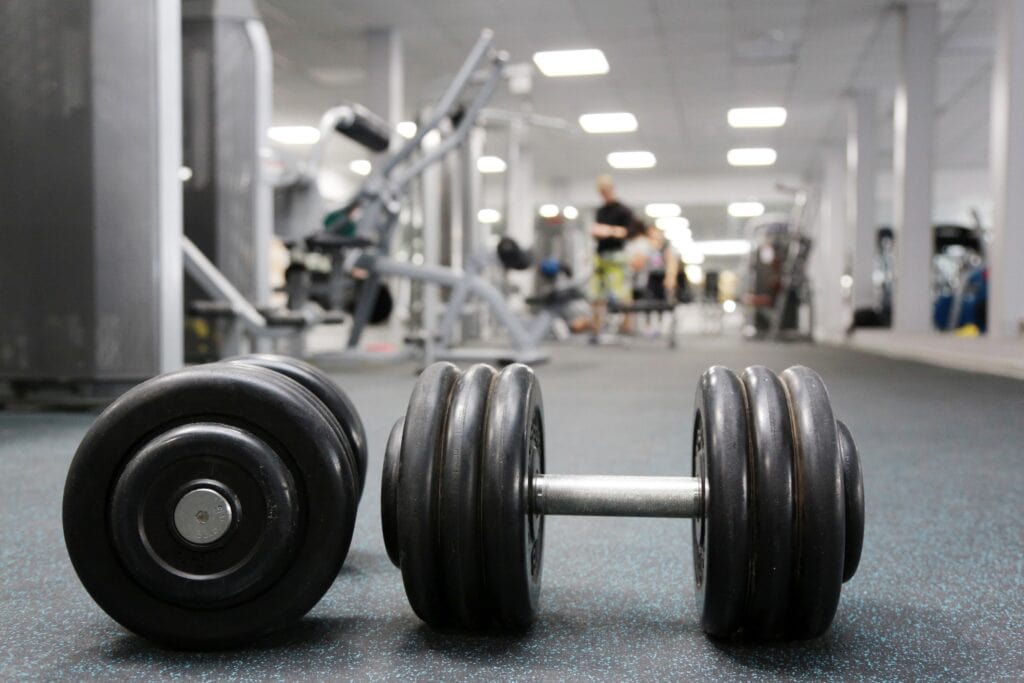
There’s been debate on what’s better to use, free weights or machines. It is easy to point out the positives and negatives for either one. Yet, both machines and free weights will positively impact your physique.
If you’ve never lifted weights before or have not trained for a long time, start at home with resistance bands. As you become stronger and more confident, progress to the gym and train at least two times a week.
Progressive Overload for Muscle Growth
If you want hypertrophy results, you’ll need to progressively increase the weight you lift or the number of repetitions.
Before adding weight, ensure your technique is good on every rep.
Remember to have rest days during the week to help your muscles recover and grow.
Variety
Introduce variety to your routine to prevent plateaus and sustain progress. This means using periodisation within your training to avoid burnout and stagnation.
Periodisation will help you have an objective. For example, you might focus on hypertrophy for 6 weeks and then on strength or endurance for 1-2 weeks.
This will help increase and decrease the training intensity as needed.
Key Pointers To Fit at 40
Including moderate aerobic exercise and resistance training is a good idea.
Using compound exercises and progressive overload will improve your physique and health. You can use free weights or machines, as both methods contribute positively.
Moreover, incorporating variety in your training helps prevent plateaus and fosters continuous improvement.
So, focusing on a balanced approach that includes exercises to work your whole body, with a structured progression, means individuals can achieve their fitness.
Do you want to get in shape but need help planning? Click this link to chat with me or become a client for free.
